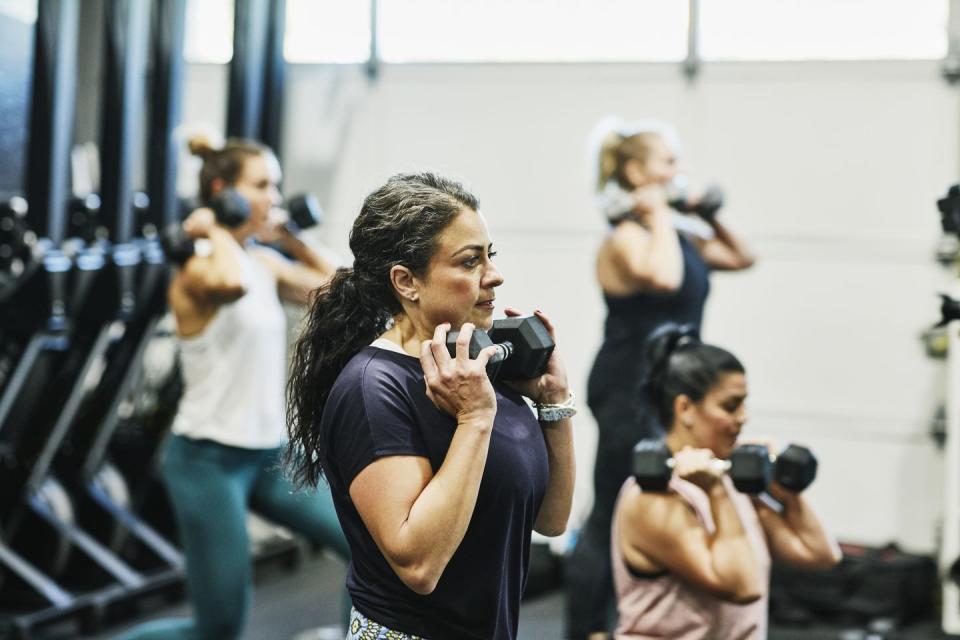Women gain twice the benefits from exercise than men, study shows

New research finds that women derive greater benefits when it comes to reducing mortality risk from doing the same amount of physical activity as men.
In a study published in the Journal of the American College of Cardiology, 412,423 US adults (55% female, age 44 ± 17 years) were examined from 1997 - 2019 by a team from institutions including the School of Clinical Medicine, Tsinghua University, Beijing and Smidt Heart Institute, Cedars-Sinai Medical Centre, Los Angeles.
Participants provided data on their exercise habits, and their levels of aerobic physical activity and strength training were measured. The variables of frequency, duration, intensity and type were taken into account.
What were the benefits for women compared to for men?
The results showed that both men and women saw the maximum benefits at around 300 minutes per week of moderate-to-vigorous physical activity, like rope jumping, plateauing afterwards, but that women experienced more benefits in half the time.
Men experienced an 18% risk reduction in all-cause mortality for this duration. By contrast, women experienced the same gain in under half the time, at 140 minutes per week, continuing to benefit with increasing minutes of exercise. At 300 minutes per week, they had a 24% lower risk of premature death from any cause.
Women who exercised regularly were also 36% less likely to have a heart attack, stroke or other cardiovascular incident over the study period compared with non-exercisers; for men, the difference in risk between the active and inactive was less than half that of women's, at just 14%.
Strength training
When it came to strength training, men who did three sessions per week saw their risk of death fall by 14%, whereas women saw the same benefits from just one session. When women also did three sessions per week, their risk was reduced by almost double compared to that of men.
Vigorous physical activity
The greatest sex difference was seen in vigorous physical activity, such as running or swimming, with men achieving a 19% lower risk in all-cause mortality after engaging in 110 minutes a week of this type of exercise, while women saw the same gains after only 57 minutes a week. Moreover, for women, the 110 minutes a week were associated with a 24% lower mortality risk.
Moderate physical activity
For men engaging in moderate activity, like cycling or brisk walking, they saw the greatest benefits at 90 minutes a week, with a 20% lowered risk, whereas women achieved the same advantages at 50 minutes per week, and saw 24% reduction at 90 minutes.
'Our study...encourages women who may not be getting enough exercise for various reasons, that even relatively small amounts of exercise can provide significant benefits,' Dr Hongwei Ji, co-author of the study from the Affiliated Hospital of Qingdao University, said to The Guardian.
'The 300-minute threshold is where we observed the greatest benefits, but statistically significant sex differences emerge with even smaller doses,' continued Ji.

Prof Emmanuel Stamatakis, of the University of Sydney, who was not involved in the study, also suggested to The Guardian that it was likely that the different responses were because 'physical effort women make for a given physical task is higher than in men.' He also thought that the study's results highlighted differences in skeletal muscle composition between the sexes.
Similarly, the authors suggested to The Telegraph that, since men generally have greater lung capacity, larger hearts and greater muscle mass, women may have to work harder in terms of respiration, metabolism and strength to perform the same movements, hence the increased benefits.
Dr Martha Gulati, director of Preventive Cardiology at the Smidt Heart Institute told The Times: 'The beauty of this study is learning that women can get more out of each minute of moderate to vigorous activity than men do.'
How much exercise should I be doing?
The NHS recommends that adults aged 19-64 should do at least 150 minutes of moderate intensity activity a week or 75 minutes of vigorous activity. They advise that adults aim to do strengthening activities that work all your major muscle groups (legs, hips, back, abdomen, chest, shoulders and arms) on at least two days.
However, research shows that women consistently engage in less moderate-to-physical activity than their male counterparts, with the far-reaching health consequences of cardiovascular diseases, type 2 diabetes and cancer.
Become a member of the Women's Health Collective and get full access to the Women's Health app, available to download on Google Play and the App Store, to get the latest celebrity-inspired workouts and fitness content.
You Might Also Like


